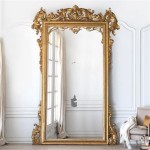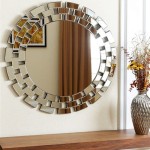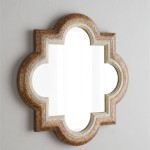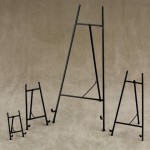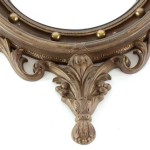How to Install a Bathroom Mirror: A Comprehensive Guide
Installing a bathroom mirror is a common home improvement project that can significantly enhance the aesthetic appeal and functionality of a bathroom space. While it may appear daunting, with the right tools, preparation, and attention to detail, most homeowners can successfully complete this task. This article provides a step-by-step guide on how to install a bathroom mirror, covering the essential tools, necessary preparations, and installation techniques.
Key Considerations Before Installation
Before embarking on the installation process, several key considerations must be addressed. Careful planning at this stage can prevent frustration and ensure a successful outcome.
Mirror Selection: The first step involves selecting the appropriate mirror for the bathroom. Considerations should include the size, shape, and style of the mirror, as well as its compatibility with the overall bathroom design. Framed mirrors offer a more traditional look and can be easier to install, while frameless mirrors provide a modern, minimalist aesthetic. Mirrors equipped with integrated lighting or defogging features may require additional electrical work.
Placement: Determining the optimal placement for the mirror is crucial. The mirror should be positioned at a comfortable height for all users, typically with the center of the mirror at eye level. Consider the presence of existing fixtures, such as sinks and light fixtures, and ensure the mirror is centered above the sink or vanity. Account for potential obstructions, such as electrical outlets or plumbing pipes. It is advisable to use a level to mark the desired location of the mirror on the wall.
Wall Type: Identifying the type of wall is essential for selecting the appropriate mounting hardware. Most bathroom walls are constructed of drywall or plaster over wood studs. However, some bathrooms may have tile or concrete walls. Drywall and plaster require the use of drywall anchors, while tile and concrete require specialized drill bits and anchors designed for these materials. Failure to use the correct hardware can result in a mirror that is not securely mounted and poses a safety hazard.
Safety Precautions: Safety should be a primary concern throughout the installation process. Wear safety glasses to protect the eyes from debris. If drilling into tile or concrete, wear hearing protection to minimize noise exposure. Handle the mirror with care to avoid breakage, which can result in serious injury. If the mirror is heavy, enlist assistance to lift and position it safely. Ensure the power is turned off to any electrical circuits in the vicinity before working near outlets or wiring.
Tools and Materials Required
Having the necessary tools and materials readily available will streamline the installation process and minimize delays. A comprehensive list includes:
Mirror: The selected bathroom mirror, ensuring the dimensions and weight are appropriate for the installation location.
Mounting Hardware: This includes screws, anchors, and mounting clips or brackets, depending on the type of mirror and the wall construction. Ensure the anchors are rated for the weight of the mirror.
Drill: A power drill is essential for creating pilot holes and driving screws. Use a drill bit appropriate for the wall material (e.g., drywall, tile, concrete).
Screwdriver: A screwdriver, either manual or powered, is needed to tighten the screws that secure the mounting hardware.
Level: A level is crucial for ensuring the mirror is installed straight and plumb. A laser level can be particularly helpful for larger mirrors.
Measuring Tape: A measuring tape is used to accurately measure the desired location of the mirror and to ensure proper alignment.
Pencil: A pencil is used to mark the wall for drilling and screw placement.
Stud Finder: A stud finder is helpful for locating wall studs, which provide a more secure anchor point for heavy mirrors.
Safety Glasses: Safety glasses protect the eyes from dust and debris during drilling.
Gloves: Gloves provide a better grip on the mirror and protect the hands from sharp edges.
Painter's Tape (Optional): Painter's tape can be used to mark the desired location of the mirror and to protect the wall from scratches during installation.
Silicone Caulk (Optional): Silicone caulk can be used to seal the edges of the mirror, preventing moisture from seeping behind it and protecting the wall.
Step-by-Step Installation Process
The following steps outline the process of installing a bathroom mirror, assuming the wall is constructed of drywall with wood studs. Adaptations may be necessary depending on the wall type and mirror design.
Step 1: Prepare the Wall: Clean the wall surface where the mirror will be installed. Remove any dust, dirt, or debris that could interfere with the adhesion of the mounting hardware. If necessary, patch any holes or imperfections in the wall.
Step 2: Locate Wall Studs (Optional): Use a stud finder to locate the wall studs behind the drywall. If possible, align the mirror mounting hardware with the studs, as this will provide a more secure anchor point. Mark the location of the studs with a pencil.
Step 3: Mark the Mounting Location: Using a measuring tape and level, accurately mark the desired location of the mirror on the wall. Ensure the marks are square and level. Use painter's tape to outline the perimeter of the mirror, if desired. This can help protect the wall from scratches and provide a visual guide during installation.
Step 4: Install Anchors: If wall studs are not accessible, install drywall anchors at the marked locations. Choose anchors that are rated for the weight of the mirror. Follow the manufacturer's instructions for installing the anchors. Typically, this involves drilling pilot holes at the marked locations and inserting the anchors into the holes.
Step 5: Attach Mounting Hardware: Attach the mounting hardware (clips or brackets) to the wall using the screws provided. Ensure the hardware is securely fastened to the wall studs or anchors. Use a level to ensure the hardware is aligned correctly.
Step 6: Position the Mirror: Carefully lift the mirror and position it against the wall, aligning it with the installed mounting hardware. If the mirror is heavy, enlist assistance to lift and position it safely.
Step 7: Secure the Mirror: Gently slide the mirror into the mounting hardware, ensuring it is securely attached. Check the alignment of the mirror with a level to ensure it is straight and plumb.
Step 8: Final Adjustments: Make any necessary adjustments to the position of the mirror. Tighten the screws on the mounting hardware to secure the mirror in place.
Step 9: Apply Caulk (Optional): If desired, apply a bead of silicone caulk around the edges of the mirror to seal it against the wall. This will prevent moisture from seeping behind the mirror and protecting the wall. Smooth the caulk with a wet finger or a caulk smoothing tool.
Step 10: Clean Up: Remove any painter's tape and clean the mirror with a glass cleaner. Dispose of any debris and tools properly.
Addressing Common Challenges
While the installation process is generally straightforward, certain challenges may arise. Understanding these potential issues and their solutions can contribute to a smoother and more successful installation.
Uneven Walls: If the wall is uneven, the mirror may not sit flush against the surface. This can be addressed by using shims behind the mounting hardware to create a level surface. Experiment with different shim placements to achieve the best possible alignment.
Broken or Damaged Mirror: If the mirror is broken or damaged during installation, exercise extreme caution when handling the broken pieces. Wear gloves and safety glasses to protect against cuts. Dispose of the broken glass properly.
Inadequate Anchors: If the anchors are not strong enough to support the weight of the mirror, the mirror may sag or fall off the wall. Upgrade to heavier-duty anchors that are rated for the weight of the mirror. Consider using wall studs for added support whenever possible.
Misaligned Hardware: If the mounting hardware is not aligned correctly, the mirror may not hang straight. Carefully re-measure and re-drill the holes for the hardware, ensuring they are level and square. Use a level to verify the alignment of the hardware before installing the mirror.
By carefully considering these potential challenges and implementing the appropriate solutions, the installation of a bathroom mirror can be accomplished successfully, resulting in an enhanced bathroom space and improved functionality.

How To Install A Mirror Without Frame Merrypad

Tutorial How To Hang A Bathroom Mirror The Diy Playbook

How To Hang A Frameless Mirror On The Wall With Pictures

Install A Recessed Vanity Mirror

How To Pick And Hang The Perfect Bathroom Mirror Roomhints

How To Install A Bathroom Vanity Mirror Light

How To Install A Bathroom Mirror The Home Depot

Bathroom Mirror Frames 2 Easy To Install Sources A Diy Tutorial Retro Renovation

How To Install A Mirrorchic Bathroom Mirror Frame Momhomeguide Com

How To Hang Install A Bathroom Mirror By Mira Showers

